Instructions
Your students are playing a game in the objective called "Equal Groups." To get JiJi across, the number of boats on each side of the bridge must be equal.
This is Level 1 - each of the rows had an even number of boats. That allow students to solve the puzzle by making the rows symmetrical.
Continue
Return to start

This is Level 2 - now rows may have an odd number of boats. This allows students to focus on an equal number instead of a symmetrical arrangement.
Notice that in the animation the boats move to a symmetrical formation as a visual proof.
Continue
Return to start

The big idea of this game is to help students gain foundations for multiplication by developing an understanding of equal groups. It also helps students' number sense by illustrating that, for example, 2 + 1 + 2 = 3 + 1 + 1.
Continue
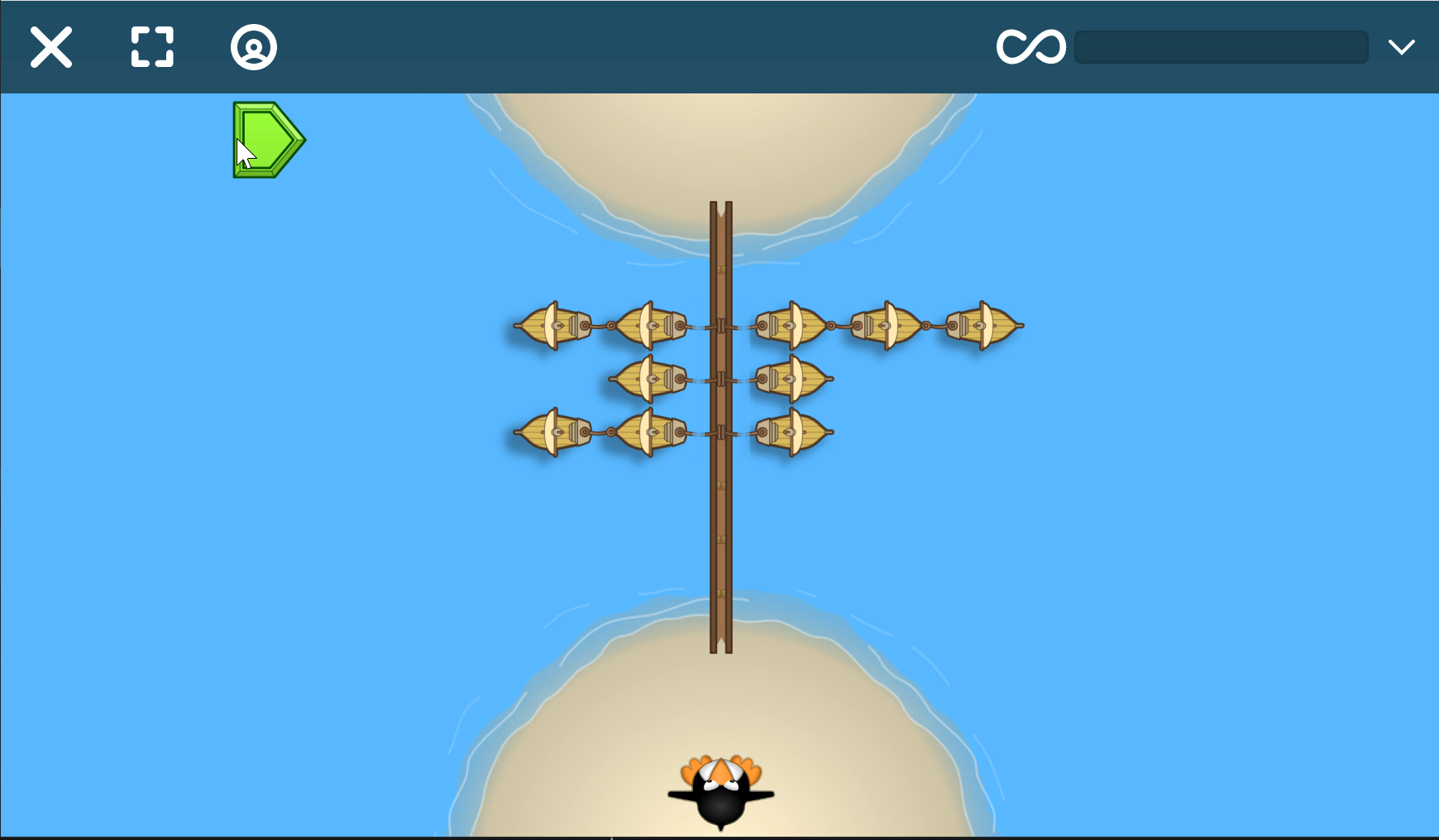
Return to start

You notice that this student seems to be struggling and is showing signs of frustration.
Your first job is to decide if he should continue trying to figure it out on his own or if you should use questions to support him through the Learning Cycle.
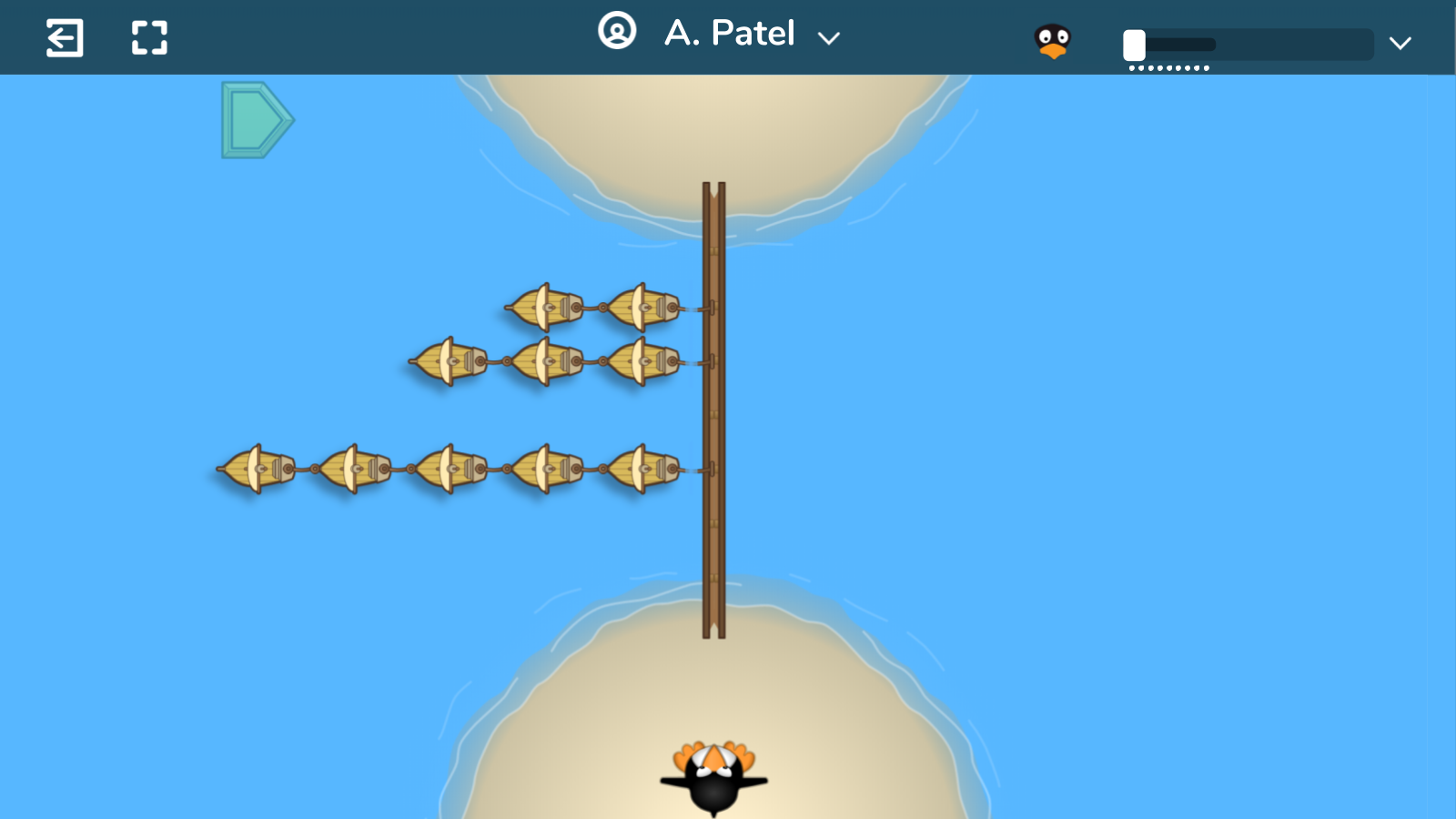
Continue


Ugh! I can't figure this one out, it's too hard!
Return to start

Is this student ready to be helped?
Yes
No

Return to start



Ugh! I can't figure this one out, it's too hard!
Actually, this student is probably stuck and could use some help.
You can tell by looking at the Game Toolbar that he has tried 9 times and has never made it farther than about 30%.
This suggests that further work on his own will not be productive.
Try again

Return to start



Ugh! I can't figure this one out, it's too hard!
Correct! A look at the Game Toolbar shows that he has tried 9 times and never gotten farther than about 30%.
Continue

Return to start



Ugh! I can't figure this one out, it's too hard!
What is the best first question?
What do you notice?
What have you tried?
Can you make the sides even?

Return to start



Ugh! I can't figure this one out, it's too hard!
This question doesn’t uncover the student’s thinking.
If you provide the answer, your student isn’t developing his own conceptual understanding and his hand will be back up soon.
Try Again


Can you make the sides even?
Return to start


This is a good thing to say if the problem is that the student doesn’t understand the game.
Since the student has played the level so many times, asking what he notices may or may not accomplish your goal to uncover his thinking.
Continue
What do you notice?
Return to start

Return to start




This is the best choice. It is open-ended and will allow you to discover exactly where the trouble is.
Continue
What have you tried?
Return to start

Return to start




How do you view the animation controls?


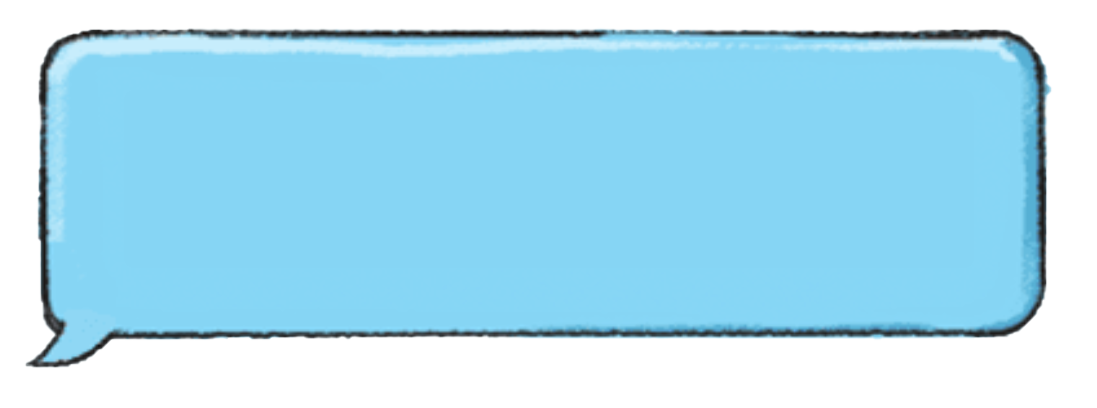





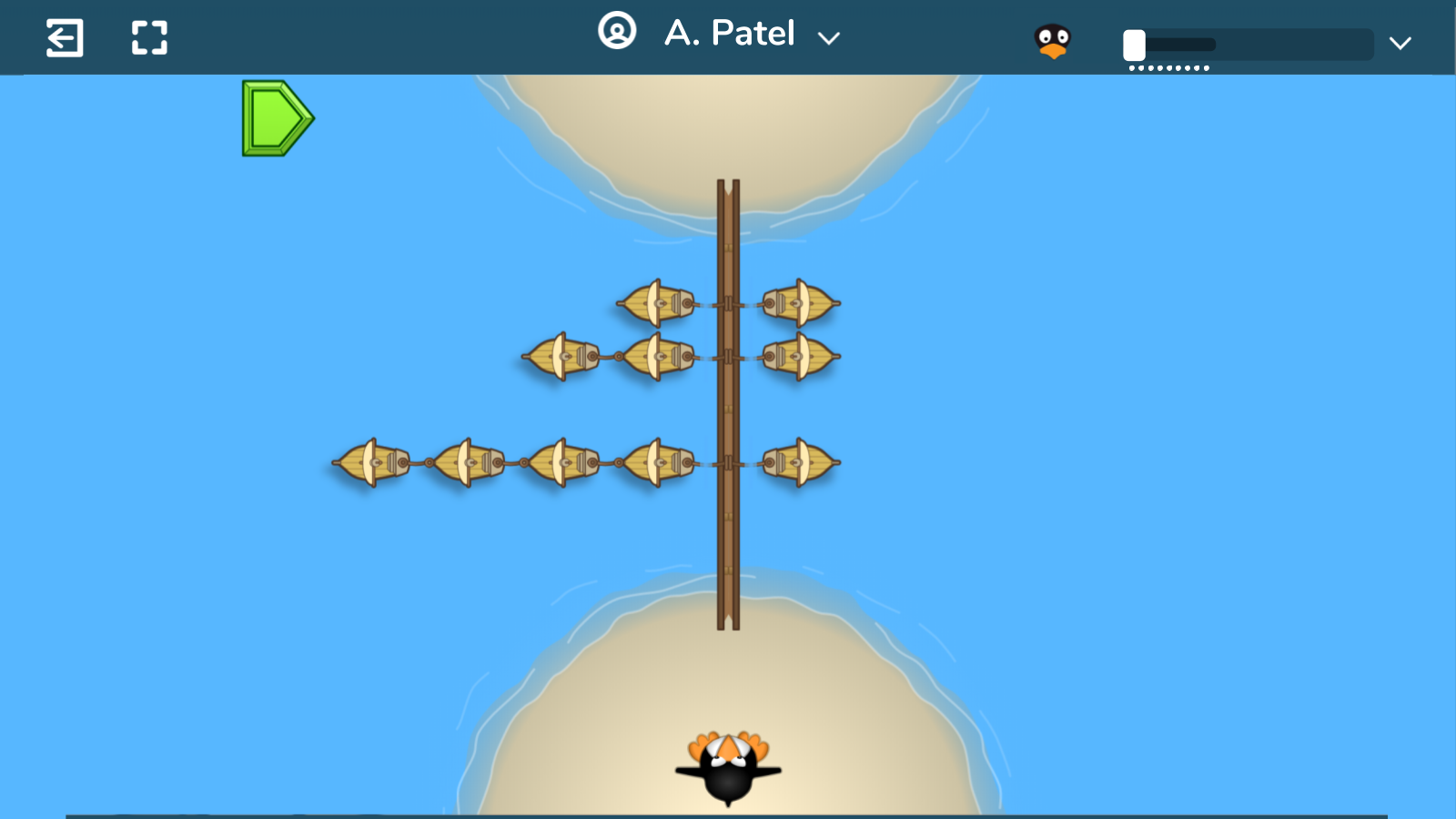
I tried moving one from the first row, one from the second row and one from the last one. It didn't work!
What happened in the animation?
I don't remember.
Let's use the animation controls to look at the feedback more slowly.
Triple click the bottom right corner.
Double click the screen while the animation is playing.
Open a new tab and login to your teacher account.
Return to start

How do you view the animation controls?









I tried moving one from the first row, one from the second row and one from the last one. It didn't work!
What happened in the animation?
I don't remember.
Let's use the animation controls to look at the feedback more slowly.
Triple click the bottom right corner.
Double click the screen while the animation is playing.
Open a new tab and sign in to your teacher account.
Return to start

Nope, it's way easier than triple clicking!
Try Again








What happened in the animation?
I don't remember.
Let's use the animation controls to look at the feedback more slowly.
I tried moving one from the first row, one from the second row and one from the last one. It didn't work!

Return to start

Nope, you don't need to sign in!
Try Again








What happened in the animation?
I don't remember.
Let's use the animation controls to look at the feedback more slowly.
I tried moving one from the first row, one from the second row and one from the last one. It didn't work!

Return to start

Yes! You can pause, rewind and slow down the animation by double clicking on the screen while the animation is playing.
You can also turn on "Auto Pause" which will automatically pause the animation.
Continue
Learn more about Auto Pause
Return to start

Auto Pause is turned on by clicking the student menu and going to settings.
This student-controlled feature will pause the animation as soon as it starts. Students push play in order to view the animation and move on to the next puzzle.
Continue
Return to start

What might you ask if the student gets it wrong again?
What happened?
Did you see how the boats moved?
Do see how there are too many boats on this side?
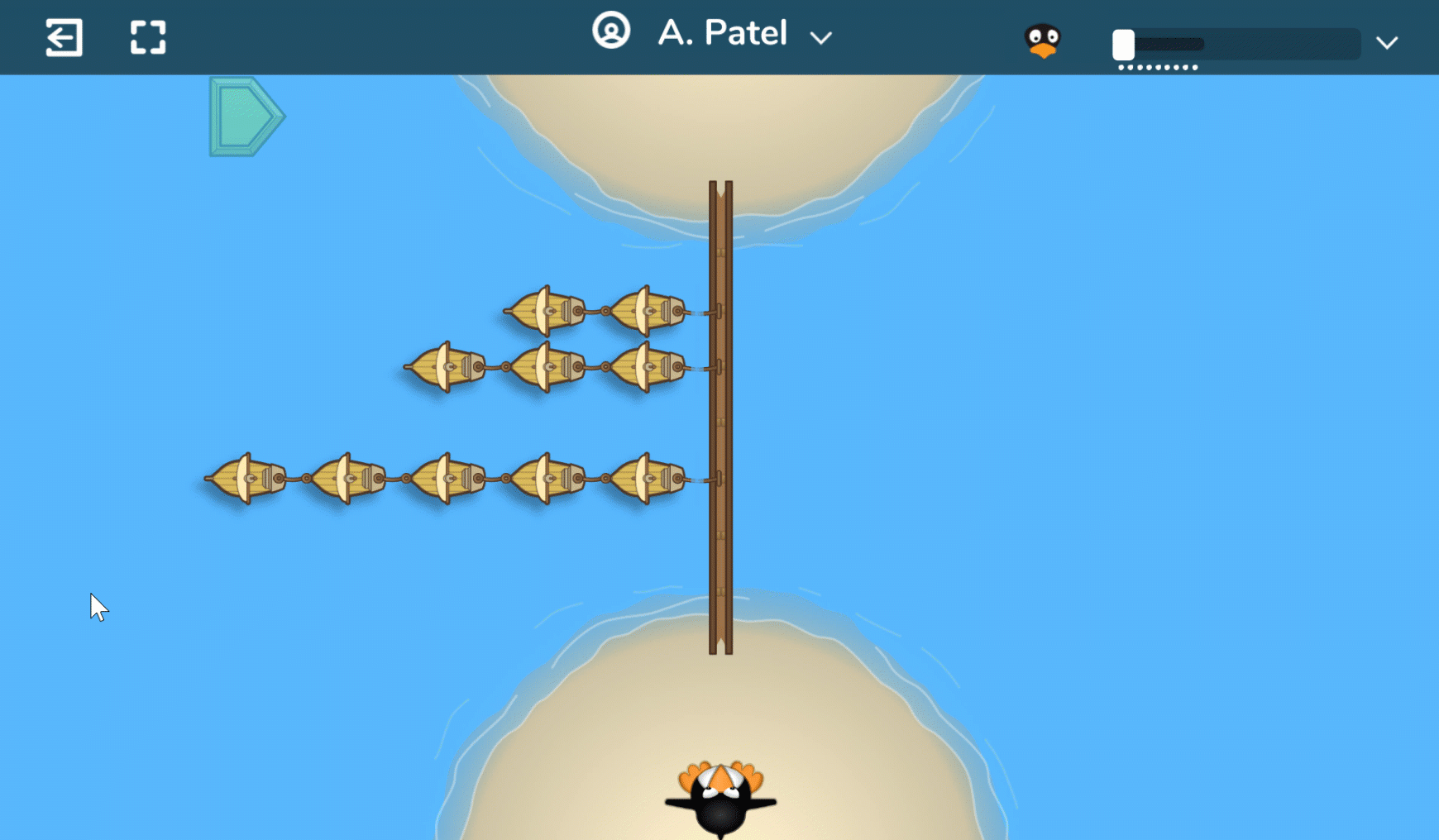
Return to start

Great! This open-ended question will reveal what your student is seeing. Depending on their answer, you’ll know if they don’t understand the idea of the game or didn’t see the animation clues.
Continue



What happened?
Return to start

This question focuses the student’s attention on the movement of the boats. One of your goals is to have students interpret the animation on their own.
Additionally, this yes/no question can lead to a one-word answer that doesn’t give you a window into the student’s thinking. A more open-ended question would be better.
Try Again

Did you see how the boats moved?
Return to start



This question shuts down the student’s thinking. It’s a quick fix but you’ll be back helping this student soon.
Try Again

See how there are too many boats on this side?
Return to start



What might you say next?








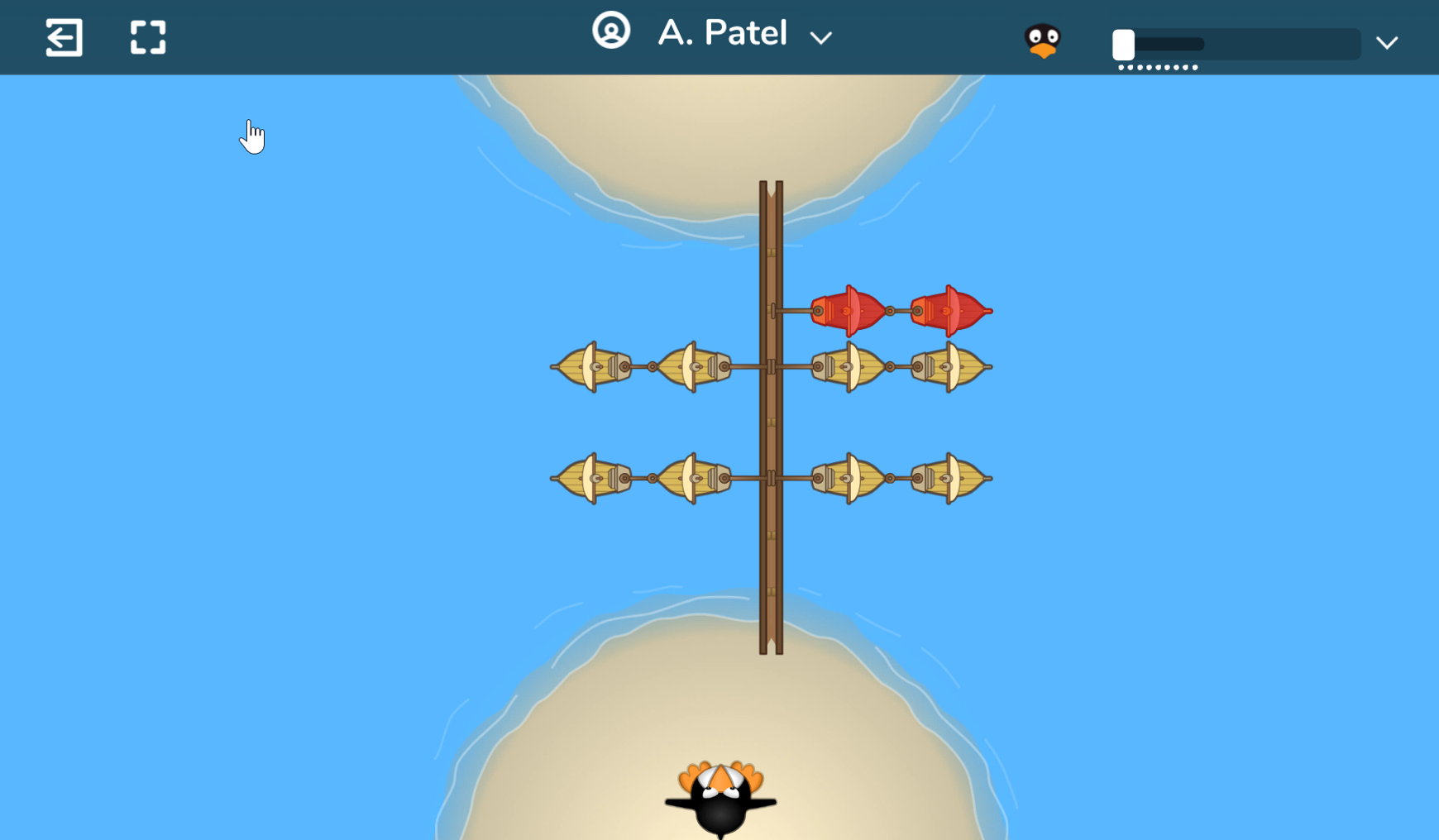
There are 2 red boats.
What happened? Let me stop the animation right here.
There are too many on that side so the red ones pulled it to the side so JiJi can't cross the bridge.
What do they mean?
You just need to make it so there is one red boat on each side.
Where should the red boats be?
How could you redo this puzzle?
Return to start








There are 2 red boats.
What happened? Let me stop the animation right here.
What do they mean?
You just need to make it so there is one red boat on each side.
Where should the red boats be?
How could you redo this puzzle?
Return to start



There are too many on that side so the red ones pulled it to the side so JiJi can't cross the bridge.
What might you say next?
Who’s doing the cognitive work here?
This statement shuts down the facilitation process and doesn’t help the student learn how to analyze the animation.
Try Again



So you just need to make it so one red boat is on each side.
Return to start

This question focused the student’s attention on the red boats.
It would be better to allow the student to realize that the red boats are important and that they provide essential feedback.
Continue

Where should the red boats be?
Return to start



This is the best choice.
You’re making it clear that he can’t just skip the hard puzzles and that you’re confident he can figure it out using what he’s learned from observing the animation.
Continue


How could you redo the puzzle?


If there were one more red boat on each side, then they would be even.



Let's try that!
Return to start

Reminding students to stop and think about their answer before they click the Go button helps promote the Learning Cycle and good problem solving.
Continue


Before you click the Go button, let's stop and look at the puzzle.


Wait, it doesn't look quite right, but I don't know how to figure it out.
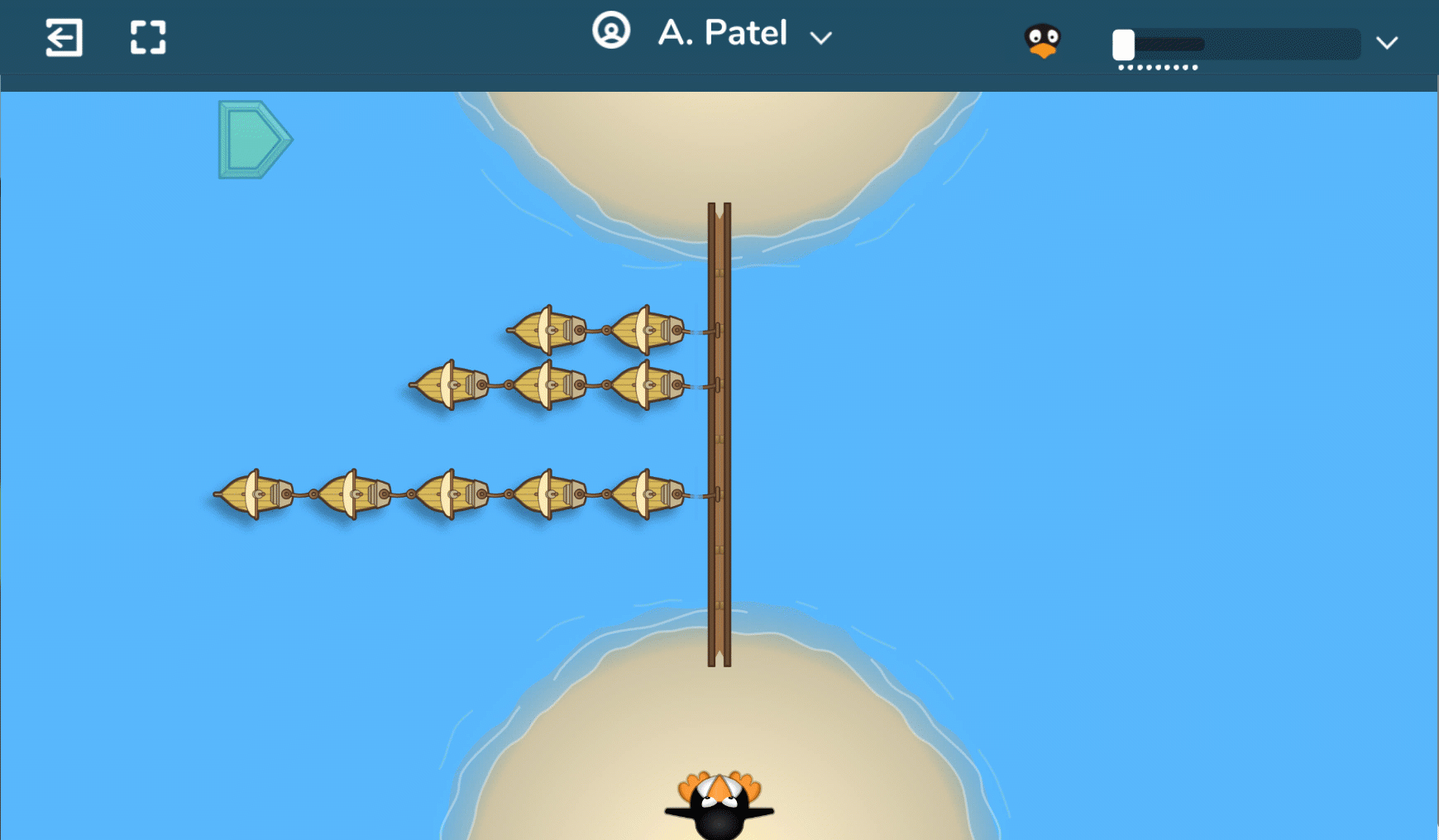
Return to start

Using math tools, white boards, or paper and pencil are a great ways to help students problem solve when they are stuck.
Continue


Let's draw what you think will happen on your scratch paper.


I can see that the top row has too many boats. I need to move one over. I think I can solve it now.

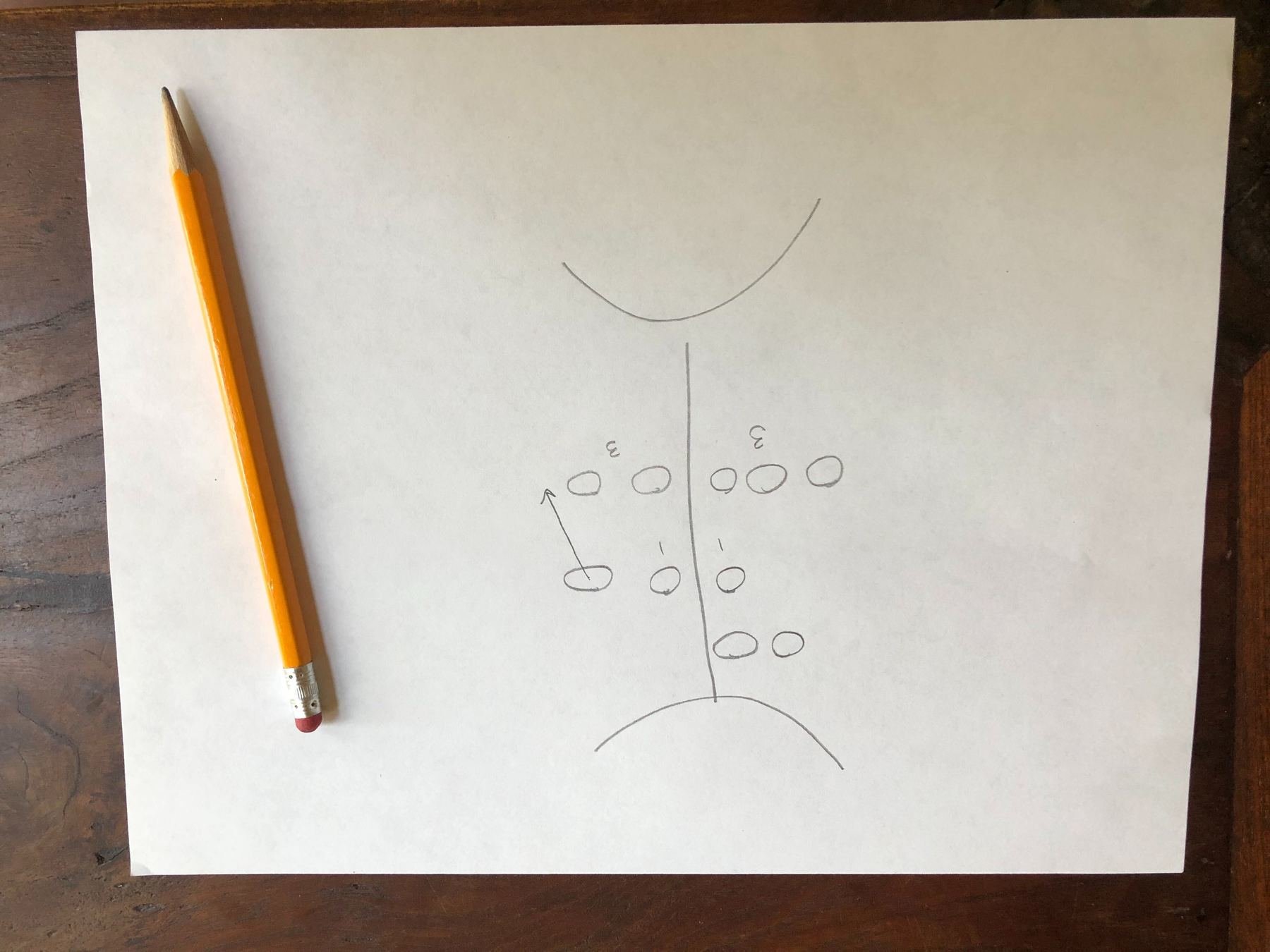
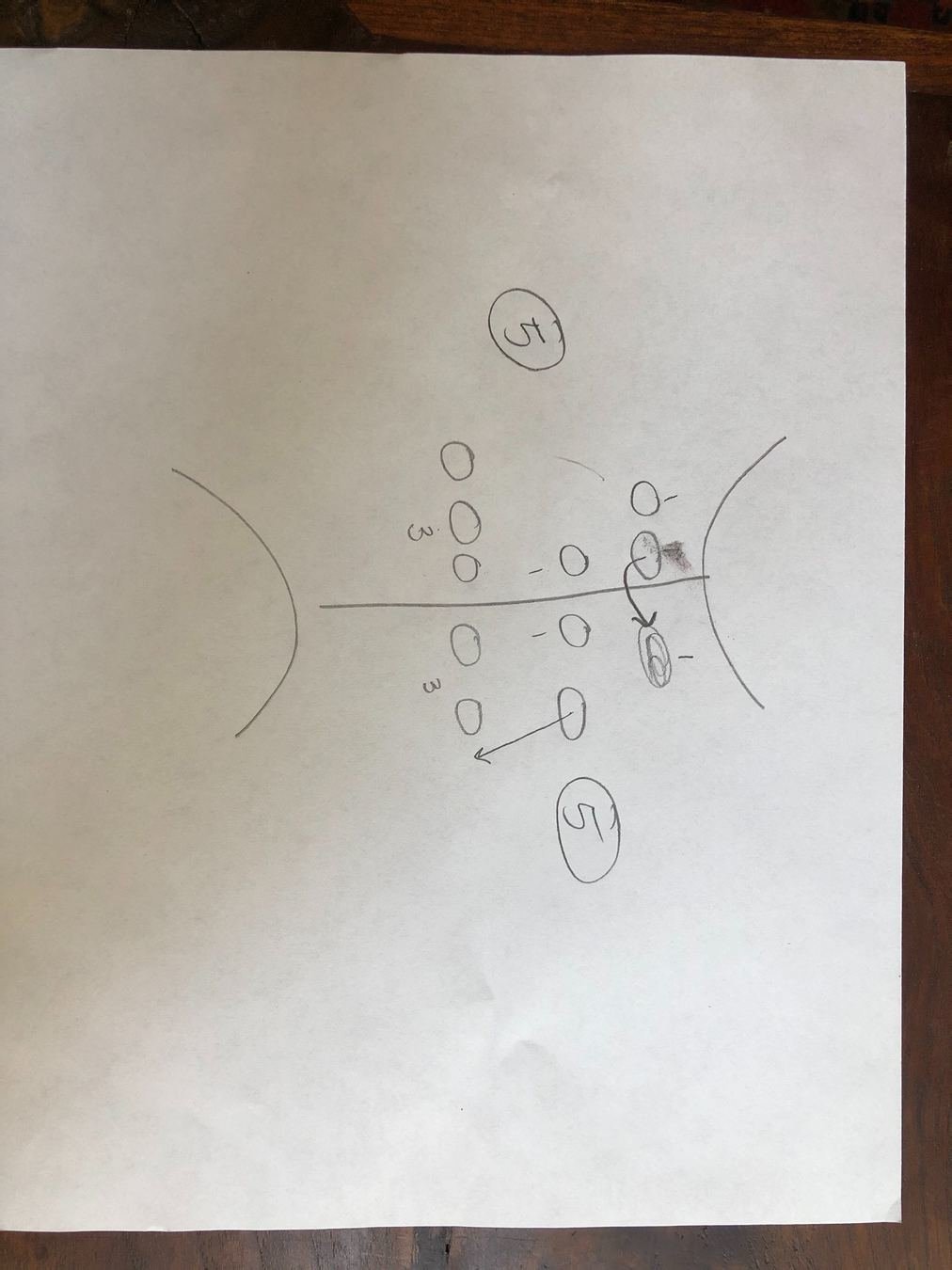
Return to start

Although this puzzle was challenging for this student and he became frustrated, using the game features, paper and pencil, and patient questioning you helped him figure it out on his own!
Is your work with this student finished?
Yes, he's got it!


Tell me about what you are doing.


I'm making it so there are 5 boats on each side....


Awesome! What helped you figure it out?


I thought the rows had to look the same on both sides, but they don't - there needs to be the same number all together on both sides.
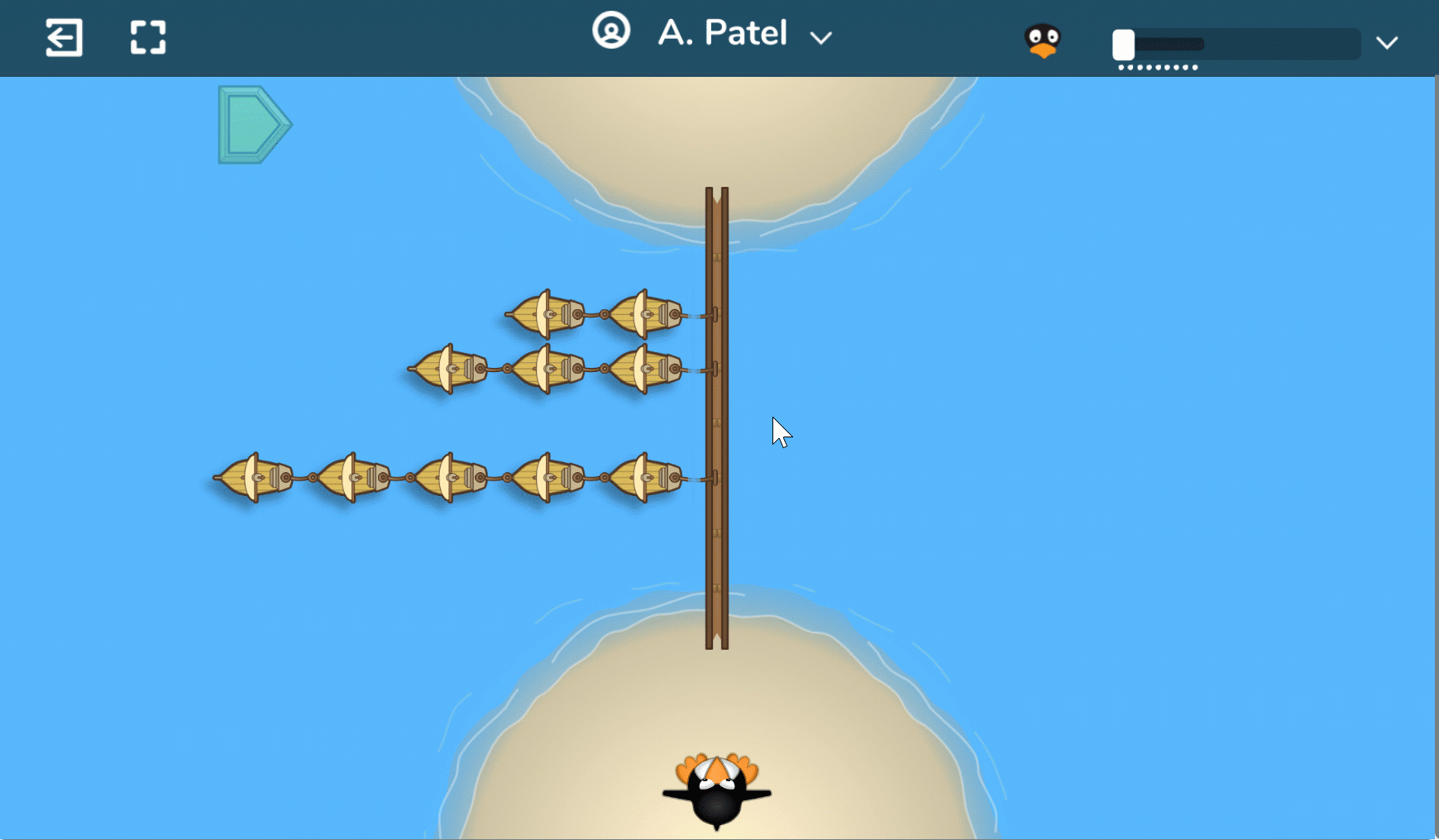
No, I think I should make sure he gets it.
Return to start

Yes, I got it!
I need to count them.
Return to start

Although this puzzle was challenging for this student and he became frustrated, using the game features, paper and pencil, and patient questioning you helped him figure it out on his own!
Is your work with this student finished?
Yes, he's got it!


Tell me about what you are doing.


I'm making it so there are 5 boats on each side....


Awesome! What helped you figure it out?


I thought the rows had to look the same on both sides, but they don't - there needs to be the same number all together on both sides.

No, I think I should make sure he gets it.
Yes, I got it!
I need to count them.
He got this one, but best practice would be to make sure that he can apply what he learned to the next puzzle.
Try Again
Return to start



Tell me about what you are doing.


I'm making it so there are 5 boats on each side....


Awesome! What helped you figure it out?


I thought the rows had to look the same on both sides, but they don't - there needs to be the same number all together on both sides.
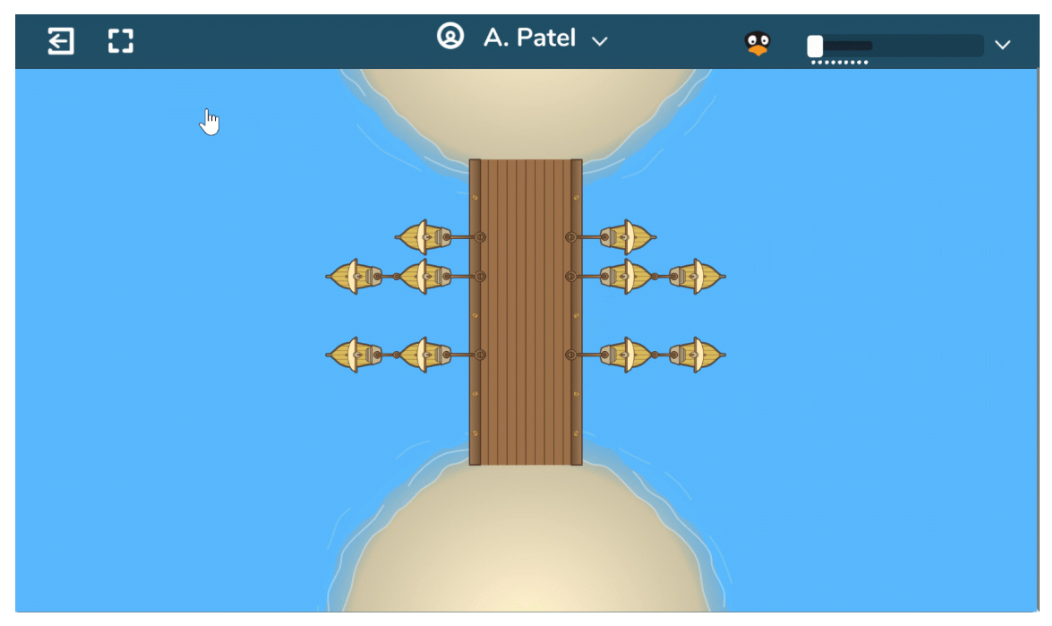
Yes, I got it!
I need to count them.
Good thinking. Even though he got that puzzle, we want to make sure he can apply what he learned to the next puzzle.
Continue
Return to start



Tell me about what you are doing.


I'm making it so there are 5 boats on each side....


Awesome! What helped you figure it out?


I thought the rows had to look the same on both sides, but they don't - there needs to be the same number all together on both sides.

Yes, I got it!
I need to count them.
Congratulations!
You’re on your way to helping your students become independent and perseverant problem solvers who are confident in their ability to figure it out on their own.


Let's see if you can apply what you learned to this next puzzle.
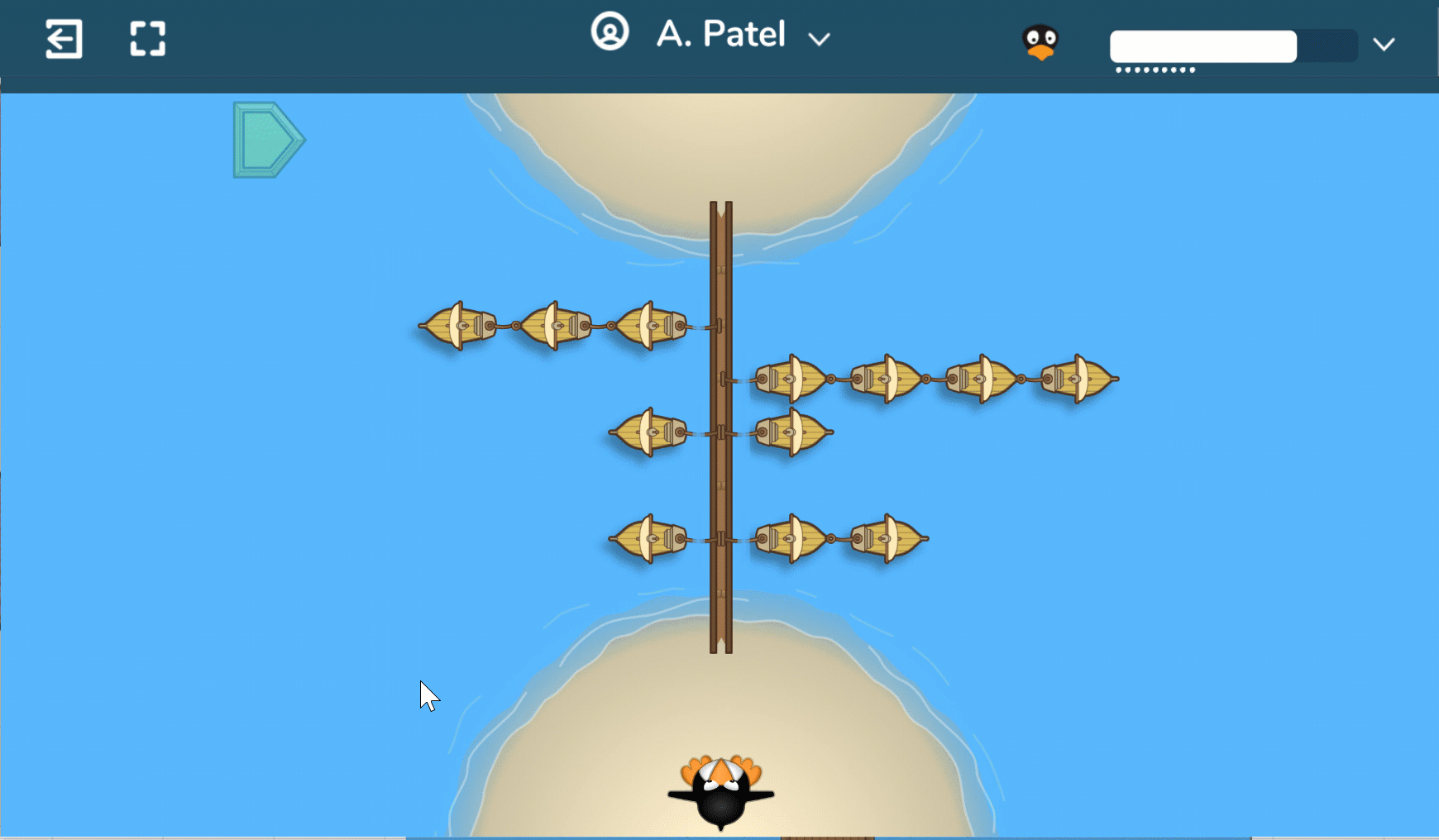


I'm proud of you for continuing to try even when it was challenging! Way to go!

I passed the level!


Now I know to count the boats on both sides to make sure they are even.

Return to start
